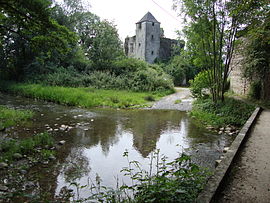오피투트과
Opitutaceae| 오피투트과 | |
|---|---|
| 과학적 분류 | |
| 도메인: | |
| 문: | |
| 클래스: | |
| 주문: | |
| 패밀리: | 오피투트과 Choo 등 2007년 |
| 종.[1] | |
오피투타과는 그램 음성과 화학적인 영양학적 분류 체계이다.[2][3][4]오피투트과 박테리아는 토양과 해안 해양 [4]샘에서 분리되었다.
계통발생학
현재 승인된 분류법은 LPSN([2]Standing in Nomenclature)과 NCBI([5]National Center for Biotechnology Information)를 가진 원핵생물명목록에 기초하고 있다.
| 16S rRNA 기반 LTP_01_2022[6][7][8] | GTDB 07-RS207에[9][10][11] 기반한 120개의 마커 단백질 | ||||||||||||||||||||||||||||||||||||||||||||||||||||||||||||||||||||||||||||||||||||||||||
|---|---|---|---|---|---|---|---|---|---|---|---|---|---|---|---|---|---|---|---|---|---|---|---|---|---|---|---|---|---|---|---|---|---|---|---|---|---|---|---|---|---|---|---|---|---|---|---|---|---|---|---|---|---|---|---|---|---|---|---|---|---|---|---|---|---|---|---|---|---|---|---|---|---|---|---|---|---|---|---|---|---|---|---|---|---|---|---|---|---|---|---|
|
|
「 」를 참조해 주세요.
레퍼런스
- ^ "Opitutaceae". www.uniprot.org.
- ^ a b J.P. Euzéby. "Opitutaceae". List of Prokaryotic names with Standing in Nomenclature (LPSN). Retrieved 2022-09-09.
- ^ Parker, Charles Thomas; Garrity, George M. (2015). Parker, Charles Thomas; Garrity, George M (eds.). "Taxonomy of the order Opitutales Choo et al. 2007". doi:10.1601/tx.14028.
{{cite journal}}:Cite 저널 요구 사항journal=(도움말) - ^ a b Parte, Aidan; Krieg, Noel R.; Ludwig, Wolfgang; Whitman, William B.; Hedlund, Brian P.; Paster, Bruce J.; Staley, James T.; Ward, Naomi; Brown, Daniel (4 February 2011). Bergey's Manual of Systematic Bacteriology: Volume 4: The Bacteroidetes, Spirochaetes, Tenericutes (Mollicutes), Acidobacteria, Fibrobacteres, Fusobacteria, Dictyoglomi, Gemmatimonadetes, Lentisphaerae, Verrucomicrobia, Chlamydiae, and Planctomycetes. Springer Science & Business Media. p. 820. ISBN 978-0-387-68572-4.
- ^ Sayers; et al. "Opitutaceae". National Center for Biotechnology Information (NCBI) taxonomy database. Retrieved 2022-09-09.
- ^ "The LTP". Retrieved 23 February 2022.
- ^ "LTP_all tree in newick format". Retrieved 23 February 2022.
- ^ "LTP_01_2022 Release Notes" (PDF). Retrieved 23 February 2022.
- ^ "GTDB release 07-RS207". Genome Taxonomy Database. Retrieved 20 June 2022.
- ^ "bac120_r207.sp_labels". Genome Taxonomy Database. Retrieved 20 June 2022.
- ^ "Taxon History". Genome Taxonomy Database. Retrieved 20 June 2022.


